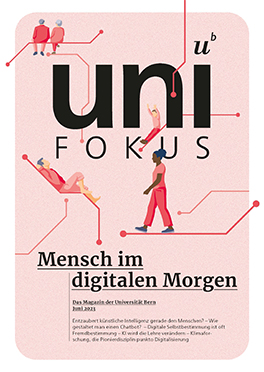Digitalisation
How do you design a chatbot such as ChatGPT?
What answers a chatbot gives depends heavily on how it is created and trained, writes Tobias Hodel, assistant professor of Digital Humanities at the Walter Benjamin Kolleg at the University of Bern.
Interactive language models such as ChatGPT can generate texts. They are based on vast amounts of text data that typically come from millions of different websites. Using a machine learning method, the algorithm now tries to learn patterns based on the regularly occurring character strings: Similar words are put together and opposite words are placed far apart.
In order to create a chatbot from this, the language model is further trained with various tasks, such as filling in gaps: Tasks that have been solved sensibly are evaluated positively and indicated to the system as being useful.
Such systems are by no means intelligent, even though they seem to be. They simply imitate – without any creativity. For unfamiliar tasks, they compute seemingly useful texts, which, on closer inspection, are completely fictitious.

New magazine uniFOKUS

Subscribe free of charge now!
This article first appeared in uniFOKUS, the new University of Bern print magazine. Four times a year, uniFOKUS shows what academia and science are capable of. Thematically, each issue focuses on one specialist area from different points of view and thus aims to bring together as much expertise and as many research results from scientists and other academics at the University of Bern as possible.